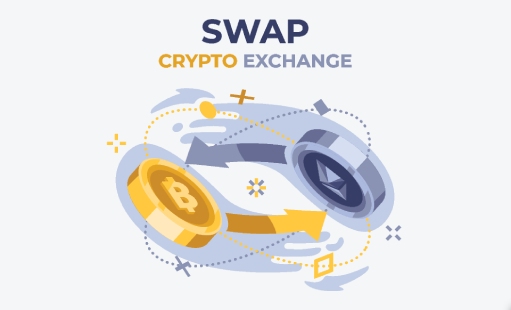-
The crypto exchange development space is in constant flux, driven by continuous innovations that enhance trading efficiency and the overall user experience. One such innovation is the crypto swap aggregator platform, which consolidates liquidity from various decentralized exchanges (DEXs) to offer users the best possible trading rates. This guide explores the concept of crypto swap aggregators, their advantages, challenges, and the detailed steps involved in developing such a platform.
Understanding Crypto Swap Aggregators
A crypto swap aggregator is a platform designed to aggregate liquidity from multiple DEXs, ensuring users get the most favorable exchange rates for their crypto trades. By tapping into liquidity pools across various exchanges, these platforms can offer more competitive rates, reduce slippage, and enhance the overall trading experience.
Crypto Swap Developed at Oodles | Spider Swap
How Crypto Swap Aggregators Operate
Liquidity Aggregation: The platform connects to multiple DEXs, combining their liquidity to provide better rates.
Rate Comparison: Real-time comparisons of exchange rates across different DEXs.
Optimal Route Execution: The platform identifies the best route for trades, considering factors like gas fees, liquidity, and slippage.
Order Splitting: To minimize slippage and secure the best rate, the platform can split orders across several DEXs.
Execution: The trade is executed via the selected routes, and the tokens are swapped accordingly.
Also, Explore | Customization Options in White-Label Crypto Exchanges
Advantages of Crypto Swap Aggregators
For Users
Enhanced Rates: Aggregators secure the best possible exchange rates by comparing multiple DEXs.
Minimized Slippage: Access to multiple liquidity pools helps reduce slippage.
Convenience: Users can interact with multiple DEXs through a single interface.
Increased Liquidity: Aggregating liquidity from various sources ensures higher liquidity for trades.
For Developers
Wider User Base: Attract users seeking optimal rates and superior trading experiences.
Higher Revenue: Increased trading volume translates to higher fees and revenue.
Advanced Features: Incorporate features like order splitting and gas optimization for an edge over competitors.
Also, Check | Layer 2 Solutions for Crypto Exchange Development
Steps to Develop a Crypto Swap Aggregator Platform
Creating a crypto swap aggregator involves several critical stages, each requiring meticulous planning and execution. Below is a comprehensive breakdown of the development process:
Market Research and Planning
Conduct extensive market research to understand the current landscape, user needs, and market gaps. Identify key features that will set your platform apart from competitors.
Defining Platform Features
Determine the essential features of your platform. Key features include:
Multi-DEX Integration: Connect to various DEXs to aggregate liquidity
Real-Time Rate Comparison: Provide real-time exchange rate comparisons
Order Splitting: Optimize trades by splitting orders across multiple DEXs.
User-Friendly Interface: Ensure an intuitive and accessible platform for users of all experience levels.
Security Protocols: Implement robust security measures to protect user funds and data.
Gas Fee Optimization: Optimize transaction routes to minimize gas fees.
Choosing the Technology Stack
Select the appropriate technology stack for your platform. Common choices include:
Blockchain Platforms: Ethereum, Binance Smart Chain, Polkadot, etc.
Programming Languages: Solidity for smart contracts, JavaScript, TypeScript for front-end development
Frameworks and Libraries: React, Angular for front-end; Node.js for back-end development
API Integration: Integrate APIs of various DEXs for liquidity aggregation
Blockchain Integration
Integrate your platform with multiple blockchain networks and DEXs. Ensure seamless connectivity to access liquidity pools and execute trades efficiently.
Smart Contract Development
Opt for smart contract development to handle core functionalities like liquidity aggregation, order routing, and trade execution. Conduct security audits to ensure the integrity and security of the smart contracts.
Platform Development
Develop the front-end and back-end of your platform. Ensure the user interface is intuitive and the back-end can handle high transaction volumes efficiently.
Security Measures
Implement robust security protocols, including:
Smart Contract Audits: Regularly audit smart contracts to identify and fix vulnerabilities
Encryption: Use strong encryption methods to protect user data
Multi-Factor Authentication (MFA): Implement MFA to enhance account security
Regular Security Audits: Conduct regular security audits to ensure the platform's security posture
Testing
Conduct thorough testing to ensure the platform operates smoothly and securely. This includes:
Functional Testing: Verify that all features work as intended
Performance Testing: Ensure the platform can handle high transaction volumes.
Security Testing: Identify and fix security vulnerabilities.
Beta Launch
Release a beta version of your platform to gather feedback from early users. Use this feedback to make necessary improvements and fix any issues before the official launch.
Marketing and Community Building
Develop a marketing strategy to promote your platform and attract users. Engage with the crypto community through social media, forums, and events to build a strong user base.
Official Launch
After thorough testing and marketing, officially launch your crypto swap aggregator platform. Ensure continuous support and updates to keep the platform secure and user-friendly.
You may also like | Cross-Chain Swaps | Empowering Crypto Exchange Development
Conclusion
Crypto swap aggregator platforms are essential in the evolving cryptocurrency ecosystem, offering users the best trading rates and experiences by aggregating liquidity from multiple DEXs. Developing a successful aggregator platform involves thorough planning, robust security measures, continuous engagement with the community, and proficiency of a crypto swap platform development company. Despite the challenges, the future of crypto swap aggregators is bright, with significant potential for growth and innovation. By embracing this technology, blockchain developers can create platforms that enhance trading efficiency, liquidity, and user satisfaction in the crypto market.

Our Offices
INDIA
Emaar Digital Greens, Sector 61,
Gurugram, Haryana
122011.
Welldone Tech Park,
Sector 48, Sohna road,
Gurugram, Haryana
122018.















